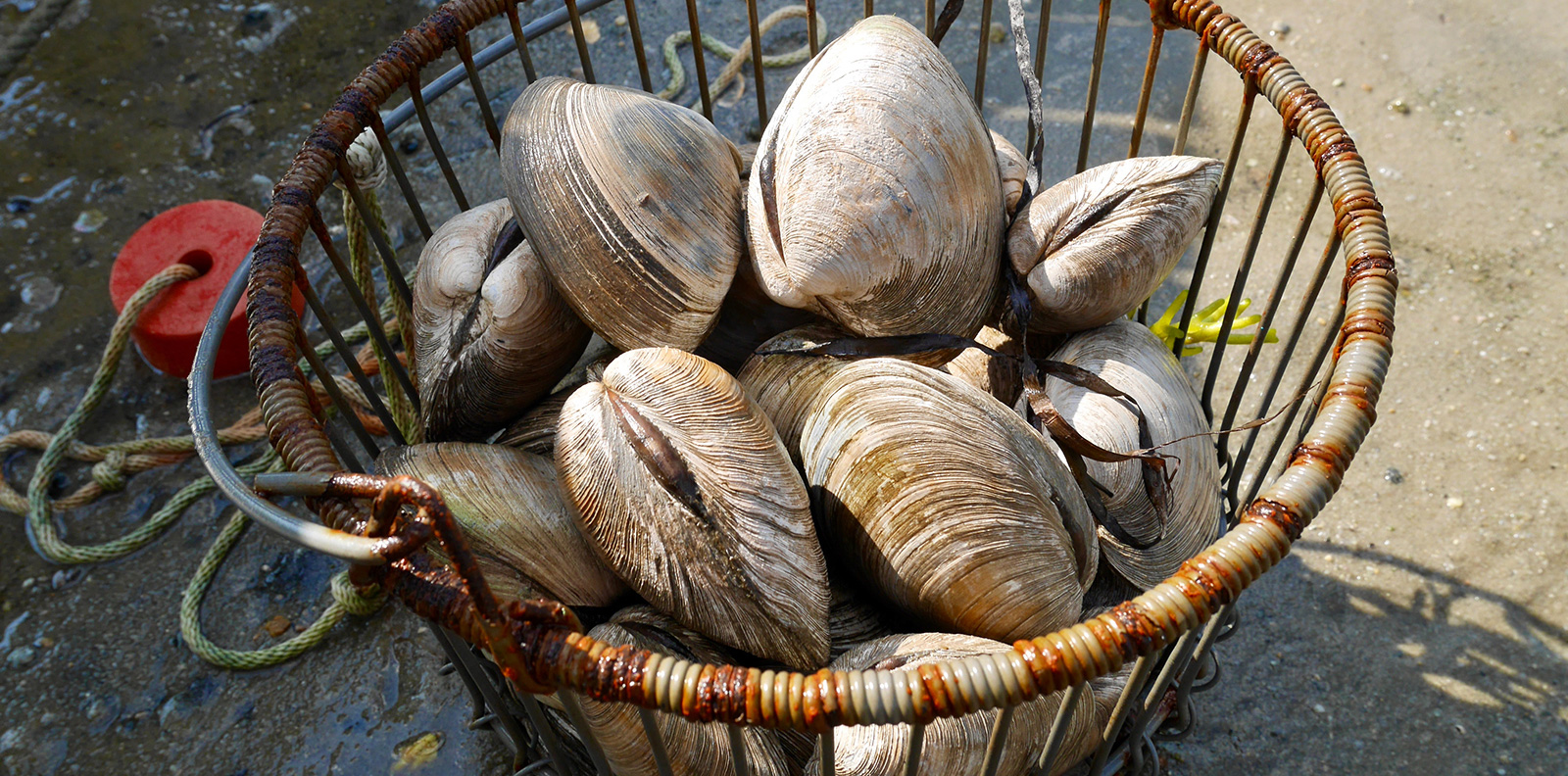Save The Bay … Scallop
November 24, 2010
JERUSALEM, R.I. — On a cold November morning, Rob Hudson ambles aboard a boat docked at the state Department of Environmental Management’s fish and wildlife facility in Snug Harbor and makes his way onto Narragansett Bay, optimistic that his nets have snared plenty of scallops. But he’s not going to eat them or sell them on the open market.
He’s hoping that his nets have snared a load of spat. Spat is the name given to juvenile scallops. Hudson, a restoration ecologist with Save The Bay, is tasked with restoring the population of these mollusks to Rhode Island’s undersea habitat.
Eelgrass, the preferred habitat for young scallops, allows them to use their bissel threads, which are similar to the beard on a mussel, to attach to the seaweed. Eelgrass was widespread in Narragansett Bay from the 1860s through the 1930s. “During the 1930s eelgrass wasting disease basically wiped out 90 percent of eelgrass in the North Atlantic,” Hudson said.
The 1938 hurricane further disrupted the bay, and modest recovery was reported until the 1960s. Since then, the bay has weathered a barrage of point source, and non-point source pollution, especially from septic systems and wastewater impacts, causing further habitat degradation. These conditions have led to a virtual extinction of Argopecten Irradians in Narragansett Bay.
“In the early to mid-1980s, what’s known as brown (or red) tide really affected eelgrass populations,” Hudson said. Save The Bay reports show that eelgrass habitat had decreased 40 percent since the 1960s, and that roughly 100 acres of eelgrass remain.
That’s not much habitat, so Hudson is on the water using technology to create an artificial habitat for these shellfish. Well, not really modern technology, more like cinderblocks tied to plastic mesh bags, and enough foam floats attached to the rope to keep the bags off the seafloor.
The spat penetrate the outer layer of the bags when they are microscopic and use their bissel threads to attach to a blue netting inside the bag. This bag keeps the youngsters in the water, but well away from predators such as sea stars and crabs. Although bay scallops are adept at avoiding predators when they are larger, with so little eelgrass around, they could use a leg up when they are this young. With any luck, the bags will be filled with tiny scallops — most no bigger than a pencil eraser — attached to the blue netting.
The spat bags, however, are only a small part of the scallop restoration program.
Any spat that Hudson and his hardy band of volunteers find will be sent to a hatchery, where they will grow to about a 2-inch diameter and will begin to exhibit growth rings on their shells. Think of the growth ring as the rings in a tree stump. You can gauge the approximate age of the scallop by number of growth rings. When the spats reach maturity, called brood stock, and are able to spawn, they are transferred to cages which, like the spat bags, are designed to keep the scallops away from predators. Brood stock plus spat bags equals restoration.
A lot of hurdles had to be cleared for the restoration project to go ahead. Money being a pretty large hurdle, the National Oceanic and Atmospheric Administration (NOAA) came through with a grant to fund the project. There also was the initial research into the site selection criteria, which included data from fisherman above sea and scientists below. Dive surveys to perform predator counts were, and are, performed regularly, and of course, the scallop population is monitored closely.
But, you might ask: What good is restoring the scallop if its habitat remains compromised? Well, Save The Bay is also attempting eelgrass restorations in the bay.
Although this collection yielded no spat, Hudson remains cautiously optimistic about the success of the program. “For the entire (2010) season we were able to find 1,927 spat during the analyses. That is an extraordinary number of spat to find in one season,” he said.
Extraordinary is right. In 2008 and 2009, the project collected 30 spat in total. “We saw four or five spawning events this year. Normally, we see two,” Hudson said. “We’re also hearing some anecdotal evidence from oyster fishermen about spat and scallops on their gear.”
The scallop is a fascinating creature. It has a more defined adductor muscle than most bivalves, which actually allows it to “swim” by clapping its shell. This fact has caused some debate over the scientific classification of the species. This method of locomotion also acts as a defense mechanism. Scallops also possess eyes, complete with lenses and retinas, which are more complex than other bivalves. While they cannot resolve shapes, scallops can detect light and motion. And the bay scallop is a functional hermaphrodite, which makes it a great candidate for aquaculture.
Hudson thinks that, aside from the diver scallop industry, which has blossomed in the past few years, or aquaculture, we probably won’t see a large commercial scalloping industry in Rhode Island any time soon. An avid diver himself, he said, “We could see a lot of recreational scalloping.” He is almost visibly salivating when he adds, “Scallops are delicious.”



